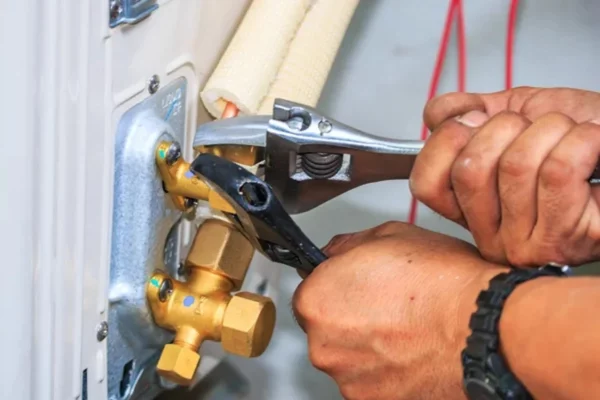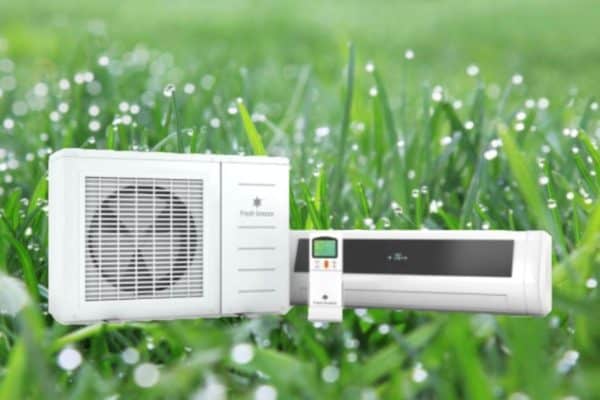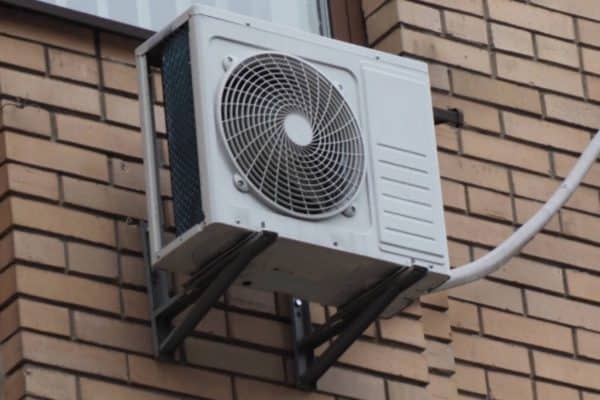Are Mini Splits Made by Daikin Better Than Other Brands?
Mini splits are sold by many different brands/companies and Daikin is one of them. Daikin is said to be the best air conditioning brand in the world but many people still asking if Daikin mini splits are really better than other brands? So, I went on a journey to unpack everything about Daikin mini splits.
Who is Daikin?
Daikin is a Japanese air conditioning company headquartered in Osaka, Japan. The mother company, Daikin Industries Ltd is a public listed company traded as TYO:6367 on the Tokyo Stock Exchange.
Unlike other air conditioning companies, Daikin focuses on making the best air conditioners and complement their air conditioners with technologies developed by themselves.
Background
If you dig into Daikin’s background, they actually came a long way. Probably longer than you think.
Daikin was founded in 1924. Daikin is the second oldest air conditioning company in the world, second to the Father of Air Conditioning, Carrier.
The three main businesses of Daikin are air conditioning, filter and chemical. Not only do they produce their own air conditioners, but they also make refrigerants for their air conditioners. How cool is that?
In the air conditioning business, Daikin provides a wide selection of air conditioning products and solutions worldwide for commercial and residential applications.
Being in the air conditioning industry for so many years, I think Daikin is best known for their mini splits or split unit air conditioners, that’s what we called. Their split units are the best in the field in my opinion.
After several acquisitions including Malaysian air conditioner manufacturer, OYL and its subsidiaries, Daikin gained access to companies such as American Air Filter, Flanders Inc and Dinair to enhance its filter product lineup for homes, offices, factories and other buildings.
It’s kinda sad to see OYL sold to Daikin. OYL was a well-known Malaysian company and one of the biggest air conditioner manufacturers. Anyhow, what done is done.
However, we don’t see much of Daikin’s filter technology in mini splits. They lean more towards commercial and industrial applications.
Daikin is the first company in the world to establish an R-32 mass-production plant that produces a more environmental-friendly R-32 refrigerant back in the year 1997.
In Malaysia, most new split units are using R-32 refrigerant. But, we rarely see R-32 mini splits in the United States and many other countries in the West. Most mini splits there are using R-410A refrigerant which is still a great refrigerant but R-32 is better.
Core Technology
Daikin leads the air conditioning market in the three cutting-edge core technologies; a) heat pump, b) inverter and c) refrigerant control.
Daikin’s heat pump mini splits have a wide range of operating temperatures to bring coolness to extremely hot regions and warmth to extremely cold regions.
Such mini splits are named as Aurora series in Daikin’s product lineup in the United States which we’ll talk about it later in this post.
The electrolytic-capacitor-less inverter developed by Daikin helps to accelerate the adoption of high-efficiency air conditioners and therefore, reduce the energy usage in homes and buildings.
“Promoting highly energy efficient inverter-based air conditioners is imperative for the global environment. To achieve this, low-cost inverter technology is needed”.
Daikin Global
The world’s first multi-split type air conditioner for commercial buildings, VRV or variable refrigerant volume, was developed by Daikin back in year 1982. As of 2016, Daikin’s VRV had improved from only able to connect 10 indoor units to capable of connecting up to 64 indoor units per system with different types of indoor units.
No bias or anything but I do feel Daikin’s VRV system is much better than other brands, especially when they are able to start automatically during commissioning, unlike other brands which require us to manually set them to start the operation.
Vertically Integrated
The word “vertical integration” somehow is getting popular these days. Probably because of Tesla. But, I do think it is a sign of a great company.
Daikin is a vertically integrated company that did their own R&D, has more than 100 production bases globally, sells their own products and provides after-sales services. Daikin is the only air conditioning manufacturer that owns everything from A to Z.
When you buy a product from a vertically integrated company, everything works seamlessly. There is no conversion between computer languages or protocols. Memory usage is less and things move faster and respond quicker especially when it involves a mobile app.
Environmental Contribution
The most remarkable thing done by Daikin, in my opinion, was the development, introduction and implementation of R-32 refrigerant.
Not only that, they open source to all companies in the world to accelerate the adoption of high-efficiency and low-environmental-impact refrigerants.
How many companies in the world have such generosity? Years of research and development to make R-32 refrigerant used in residential air conditioning units possible had given away to all competitors for free. It shows the amount of confidence Daikin has.
To encourage the use of R-32 refrigerant globally, Daikin offered free access to 93 patents for emerging countries in 2011 and then expanded this free access worldwide in 2015.
In July 2019, the company announced to provide free access to the pledged patents, which had been filed after 2011 and were not included in the previous free access to 93 patents.
As a result, Daikin was recognized by the U.S. government as a company contributing to the protection of the environment in the year 2015, 3 years after Daikin first introduced air-conditioning and heat pump technology utilizing the refrigerant R-32, starting in Japan in November 2012.
In addition, the inverter technology that was marketed and promoted by Daikin since 1984, is saving 58% of energy from traditional on/off air conditioners every single day.
What Kind of Mini Splits Daikin Made?
In many countries, Daikin offers the most variety when it comes to split air conditioners. They have so many models that it’s too long for me to cover every one of them in a single post. Thus, I’ll focus on single zone mini splits wall-mounted models which most people are going to end up using.
17 Series: Value for Money
The Daikin 17 series mini splits are also known as the Daikin 17 SEER mini splits. As the name suggests, all models in this series have around 17 SEER energy efficiency rating.
Although Daikin did not state anything but the 17 series is about value for money. It’s meant to bring down the entry price so that more people can afford Daikin mini splits. Thus, its appearance may not look very good and the efficiency is below average.
However, they work just as well as other mini splits made by Daikin. Quality is not compromised but specifications.
Daikin 17 series comes with 9000 BTU, 12000 BTU, 18000 BTU and 24000 BTU for both cooling only model and heat pump model (cooling & heating).
Most people are going for the 17 series due to low entry price. Although the 17 series are not very efficient, it’s already so much better than window and portable air conditioners.
Daikin 17 series wall-mounted mini split heat pumps:
- 9000 BTU (click the link to view on Amazon)
- 12000 BTU (click the link to view on Amazon)
- 18000 BTU (click the link to view on Amazon)
- 24000 BTU (click the link to view on Amazon)
19 Series: The Standard One
The Daikin 19 series mini splits are also known as the Daikin 19 SEER mini splits. Again, as the name suggests, all models in this series are around 19 SEER energy efficiency rating.
Mini splits from the 19 series are more of a standard one. With 19 SEER of energy efficiency, they are on par with most of the mini splits out there in the market.
Again, quality is not compromised but this time, the specification is slightly better.
Similarly, Daikin 19 series comes with 9000 BTU, 12000 BTU, 18000 BTU and 24000 BTU for both cooling only model and heat pump model (cooling & heating).
Daikin 19 series wall-mounted mini split heat pumps:
Aurora Series: For Extreme Climates
The Daikin Aurora series are meant for extreme climates (both cold and hot). Mini splits from the Daikin Aurora series have an exceptionally wide working temperature.
Most mini splits can still operate at an outdoor temperature as low as 5°F (-15°C) and as high as 115°F (46°C). However, that’s the minimum and maximum temperature limit. Either the heating capacity or the energy efficiency is compromised when a mini split is operating around the temperature limit.
Daikin Aurora models have an operating temperature range from -13°F (-25°C) to 60°F (16°C) for heating. For cooling, they have an operating temperature range from 50°F (10°C) to 115°F (46°C).
To compare, the standard 19 series models have an operating temperature range from 5°F (-15°C) to 65°F (18°C) for heating and the same for cooling from 50°F (10°C) to 115°F (46°C).
For cooling, the Daikin Aurora series maintain 100% cooling capacity until 104°F (40°C). Beyond that, the cooling capacity starts to drop and may stop working entirely when the outdoor temperature goes above 115°F (46°C).
For heating, the Daikin Aurora series operating characteristic as follow:
- down to 47°F (8°C) – 100% heating capacity @ 100% efficiency
- down to 17°F (-8°C) – heating capacity drop to ~65% but efficiency maintain at 100%.
- down to 5°F (-15°C) – back to 100% heating capacity but efficiency at ~60%.
- beyond 5°F (-15°C) – continue to lose heating capacity & efficiency until stop working around -13°F (-25°C).
The Daikin Aurora series is available at 9000 BTU, 12000 BTU, a special 15000 BTU, 18000 BTU and 24000 BTU. All of them are heat pumps for cooling and heating.
People who are living in extremely cold places are suitable to use the Aurora series. They can save a lot of money every month by switching from electric heaters and gas furnace to mini split heat pumps. See more in my post why you should use a heat pump for heating.
Daikin Aurora series wall-mounted mini split heat pumps:
Emura Series: Aesthetically Pleasing
In my opinion, the Daikin Emura series is designed with aesthetics in mind. The efficiency and operating temperature are standard but the appearance is much better.
Upon turning on, the front panel of Emura models slides upward to reveal the supply air outlet which looks cool. Besides, they come in pure white color unlike the yellowish color of most mini splits and a special grey color that can blend in very well with your house interior.
However, they are only available at 9000 BTU, 12000 BTU and 18000 BTU. All three of them are heat pumps too. Interior designers love the Emura series.
Daikin Emura series wall-mounted mini split heat pumps:
- 9000 BTU (click the link to view on Amazon)
- 12000 BTU (click the link to view on Amazon)
- 18000 BTU (click the link to view on Amazon)
LV Series: High Efficiency
The Daikin LV series is all about high efficiency. While most mini splits are around 20 SEER, the Daikin LV series is around 24 SEER. It’s about 20% more efficient than standard mini splits.
They are available from 9000 BTU up to 36000 BTU including a special 15000 BTU. All of them are heat pumps. The LV series is for people who are serious about energy saving.
Daikin LV series wall-mounted mini split heat pumps:
NV Series: Large Capacity
The Daikin NV series is like the 17 series but offers a large capacity at 30000 BTU and 36000 BTU. Both of them are available in the cooling only model or cooling and heating model. However, their appearance is different from the 17 series.
Quaternity: Premium & Luxury
The Daikin Quaternity series is the ultimate mini split from Daikin that consists of three premium models for a luxury experience. They are packed with the highest specification and offers the most features.
Although they are available at 9000 BTU, 12000 BTU and 15000 BTU only, the 9000 BTU model comes at a whopping 26.1 SEER which is even higher than the high-efficient LV series.
Their operating temperature is set at a more optimal and practical range from 14°F (-10°C) to 109°F (43°C) for cooling and -4°F (-20°C) to 75°F (24°C) for heating.
Models from the Daikin Quaternity series also have the best air filter but of course, incomparable to HEPA filters.
Daikin Quaternity series wall-mounted mini split heat pumps:
What Makes Daikin Mini Splits Better Than Other Brands?
Well, what Daikin mini splits offer is also available in most mini splits made by other brands. In addition, Daikin-made mini splits are not any cheaper than other brands. So, what makes Daikin mini splits better than others?
Everything Work Seamlessly Together
As mentioned earlier, Daikin is a vertically integrated company that owns everything. This makes everything work seamlessly together including the remote controller, the mini split itself, the WiFi adapter and the mobile app.
Furthermore, the compressor which is the single most expensive and most important component in a mini split is also made by Daikin themselves, unlike other mini splits where the compressor is from somebody else like Copeland, Panasonic and GMCC.
Many other components used in Daikin mini splits are also branded as Daikin. They may not be manufactured directly from Daikin but they go through the whole quality control process of Daikin.
Other things such as spare parts numbers, error codes and service references are all controlled by Daikin and thus, it makes you go through the process better and quicker.
Most Comprehensive Product Lineup
Daikin has the most comprehensive product lineup of any other air conditioning company. While Mitsubishi, Panasonic and Midea have an extensive product lineup, but they are no way near the level of Daikin.
With a complete product lineup, Daikin is able to offer solutions to almost any situation and condition. Their mini splits are not just available in wall-mounted type but also ceiling cassette, floor-mounted, ducted units and more.
Not just the air conditioner itself, Daikin also has different types of thermostats/controllers, measurement devices and other accessories to complement their entire product lineup.
Technologies That Actually Work
The technology used in Daikin mini splits is researched, developed, tested, implemented and continuously improved by Daikin engineers.
They did their technologies in-house and put them to work in their mini splits and other air conditioners. There are no compatibility issues.
Other brands may take generalized technologies and use them in their mini splits. They may put on several other adaptors and converters in order to allow different computer languages to speak to each other. This makes the talking slow and inefficient.
Never Seen Before Warranty Duration
Perhaps, the best thing about using Daikin mini splits over other brands is the 10 years part warranty offer by Daikin. Moreover, many contractors work with Daikin to provide 12 years part and labor warranty which is never seen before in other air conditioning companies in the United States.
This shows that Daikin is extremely confident in their product quality and the training they gave to their authorized contractors.
I’ve recruited contractors to train them and authorize them to sell and install products. Let me tell you, I have no confidence to give 12 years warranty for part and labor because that’s crazy.
Nevertheless, Daikin offers that and it’s the ultimate security they give to all consumers.
Bottom Line
After working in the air conditioning industry for so many years, my favorite air conditioner brand is still Daikin. In Malaysia, they have a very competitive price but in the United States, they are slightly more expensive than most mini splits.
However, I’m confident that it is totally worth paying a little more to get a Daikin logo on your mini split.
I’m not in affiliate with Daikin or anything. I’m just speaking from the bottom of my heart. I’m kinda a fan of Daikin if that’s a thing.
An installer once said to me: “If you don’t know which brand to choose, just use Daikin. They’ll never break”. Well, it’s exaggerating but the Daikin mini splits installed in my house are still rocking to this day.
Lastly, consider my Mini Split (eBook) if you want to know how can you use Mini Split in your house. If you still have doubt or not feeling confident enough, feel free to consult me.
Consultation Service
Ask me for HVAC advice such as brand selection, best model, benefits, features, placement, duct size, grille size, how to design, design check, verification and other HVAC related queries.
If you have anything to add (or ask) about this topic, leave a comment down below!








